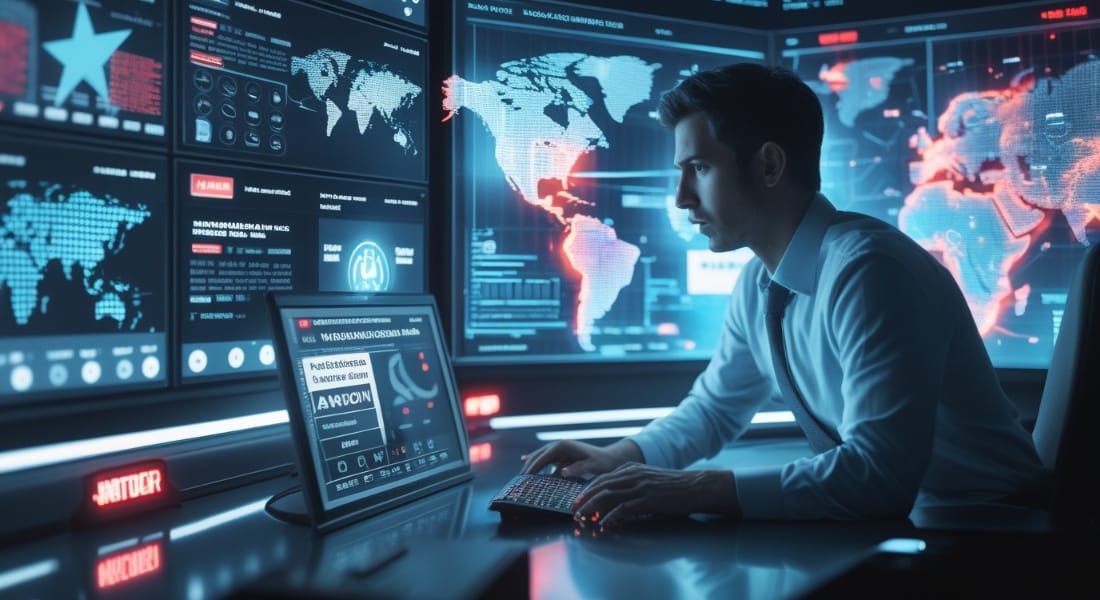Verifications of Identity in the modern digital era have turned out to be more essential than before. Since facial recognition is being integrated with all kinds of activities such as unlocking smartphones, border security as well as any online banking, the probability of being subjected to fraud by way of spoofing attacks is on increase. Here is where Liveness Detection comes to the rescue, a new game-changer in the field of biometric security that allows confirming that the identity of the face seen through the camera is that of a live person and is not a photograph, a video, or a mask.
In this blog we shall examine what Liveness Detection is all about, what Face Liveness Detection is, various forms of Liveness Detection Technology and what differentiates Active vs Passive Liveness detection is.
What is Liveness Detection?
Liveness Detection is a security-related biometric helping to answer the question whether the face shown to a system belongs to a living person or not (printed photo, 3D mask or video replay may be of any call). The key objective is to avert identity spoofing and frauds in cases of unauthorized access to systems or information.
The use of technology to spoof has evolved as the deepfake phenomenon emerged, and as high-resolution imagery manipulation became widespread. To deal with those dangers, recent biometrics should not only be capable of recognizing the faces, but also authenticating that the user is alive at the time of the authentication.
How Face Liveness Detection Operates?
Advanced algorithms and sensors of Face Liveness Detection are analyzed to determine the characteristics of the live human face in the real-time. It sees micro-movements, texture of the skin, 3D depth and behavioral reactions that cannot be simulated with still images or videos created in advance.
There are two significant options of liveness detection:
Software-Based Detection: It involves AI and machine learning to process picture information and detect differences that are signs of spoofing.
Hardware-Level Detection: Analyses the 3D geometry of a face using infrared sensors, depth cameras, or other dedicated hardware.
The deployment option will be based on cases where to use it and the security level. Face Liveness Detection is a software that is becoming increasingly utilized in numerous mobile applications and financial services because it is scalable and convenient.
Kinds of Liveness Detection Technology
The technology of Liveness Detection can be divided into two basic groups:
1. Active Liveness Detection
Active Liveness Detection involves the user taking particular actions, e.g. blinking, smiling, moving their head side to side or following on-screen instructions. Such interactions aid the system to confirm the existence of a live human being. Active detection is very precise and safe since the user is required to be involved.
Pros:
Very hard to spoof.
Performs nicely in confined set ups.
Offers evident user interaction.
Cons:
A little less usable.
Not the best solution to disabled or noisy surroundings.
2. Passive Liveness Identification
Passive Liveness Detection is an automatic and the process operates in the background without the need of any user interaction. It involves AI and computer vision technology to extract minor features such as skin texture, lighting reflection, depth, and motion to decide whether to flag it as lively or not.
Pros:
No hassle and easy to use.
Perfect to verify remotely and on mobile.
More convenient and quicker.
Cons:
Might be a little less safe when not done properly.
This algorithm needs the most advanced algorithms and superior images.
Which one is better Active vs Passive Liveness Detection?
Active vs Passive Liveness Detection is dependent on what application is in use and the level of security that is required. In low-risk scenarios, such as those that take place in a day- care facility, Active Liveness Detection might not be of interest because it is an extra layer of engagement and security. Nonetheless, in the context of mobile devices and eKYC as well as on-line banking Passive Liveness Detection can provide a much more comfortable user experience with only a modest loss of ease of use.
Most modern systems have shifted to a more approachable combination of security and usability, and so active and passive approaches are now coupled together (hybrid).
Applications Liveness Detection
Banking and Finance: Approves consumers in mobile banking operations and internet accounts registration.
E-KYC (Know Your Customer): Can assist firms in verifying the identity of their users without face-to-face identifications.
Access Control: Ascertains that unauthorized person cannot gain access to the secured premises.
Healthcare: Applied in the protection of patient onboarding within telemedicine systems.
E-learning and Exams: It eliminates the cases of cheating, because the real student sits the examination.
Future of Liveness Detection
Since threats keep evolving, Liveness Detection Technology is taking more sophisticated trends. The combination of AI, behavioral biometrics and 3D facial recognition is stretching the envelope. It is conceivable that within the near future biometric systems will be appearing that will not only be able to verify liveness but will be able to identify emotional states and stress levels as well – increasing both the precision and detail of the biometric identity check.
Organizations in various fields are quickly embracing Face Liveness Detection in a bid to safeguard their users and information. No matter what type of organization you are (fintech startup or healthcare organization or government), the time of taking weak liveness detection measures has passed; now, a robust liveness detection is necessary.
Conclusion
Liveness Detection becomes one of the most important foundations of secure biometric authentication in a digital world that is increasingly being challenged by the threat of identity fraud. Modern technology will either assure us in its Active Liveness Detection or Passive Liveness Detection, but only real and live human beings will have access to applications having sensitive systems. The current advancement of Liveness Detection Technology will have a more crucial position in protecting digital identities across different countries as it becomes more advanced.
With the knowledge and the ability to use the relevant liveness detection solutions, companies can outwit fraudsters, as well as allow their customers to have a smooth and safe online experience.




